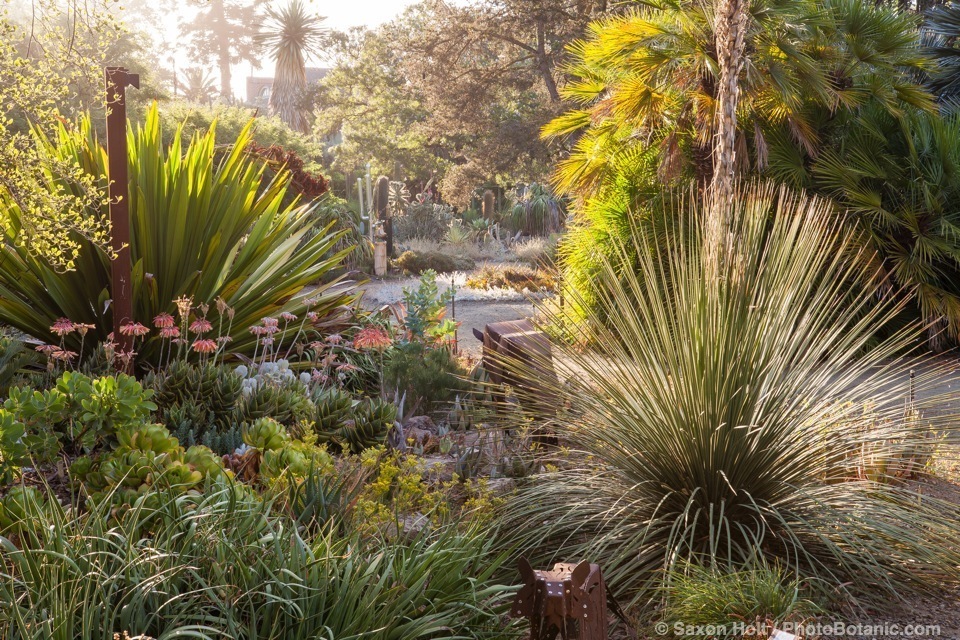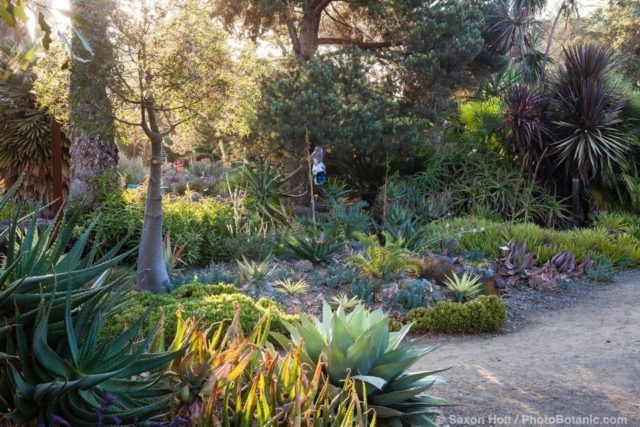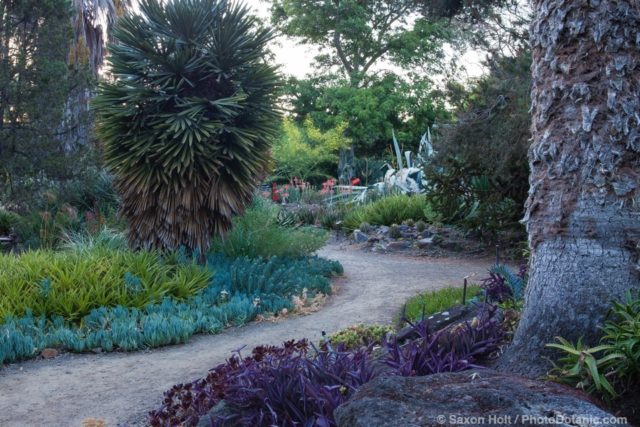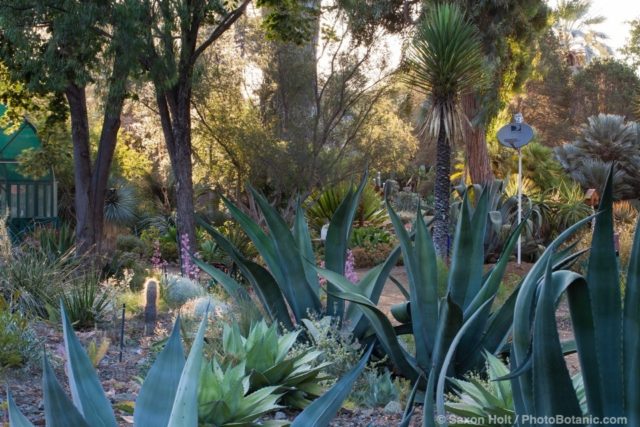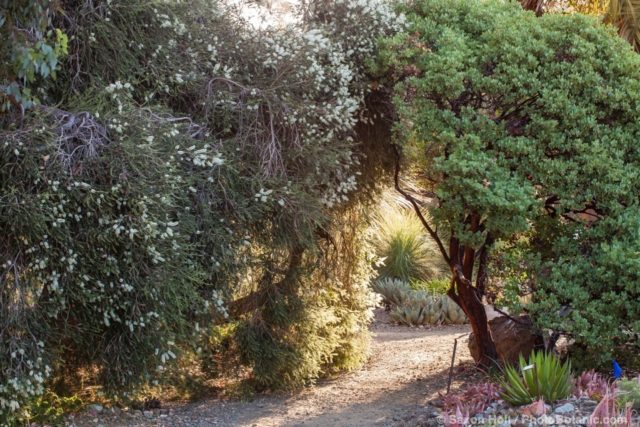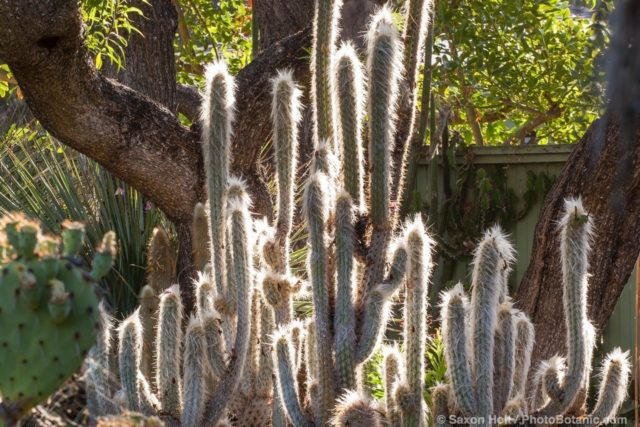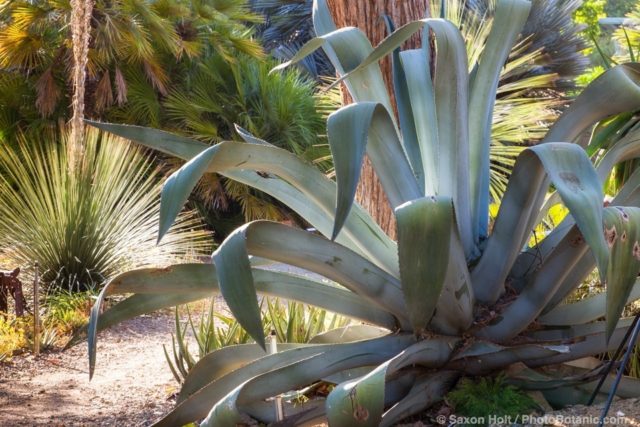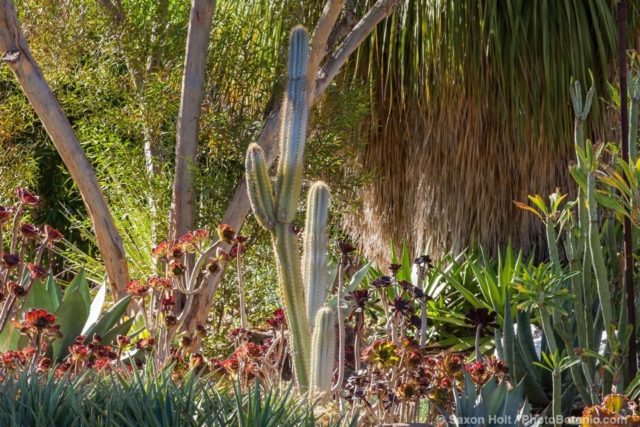Recently I photographed at the Ruth Bancroft Garden in Walnut Creek, about an hour from my home, and needed to arrive before dawn.
The Bancroft Garden is one of the most iconic gardens in America, full of mature cactus and succulents in a summer-dry climate, a testimonial to Ruth’s plant choices 50 years ago and successful gardening in a climate where water is always scarce in the summer.
The sun gets hot and bright quickly in Walnut Creek, and the strong, graphic shapes of the succulents soon become contrasty and too stark for most photography. I needed to arrive before the sun.
Light is critical in all photography. For garden photography the magic hours tend to be the two first hours and the two last hours of the day. If you know how to use it, the quality of light is very similar at both times; some photographers prefer the late afternoon when there is often a warmer cast to the light.
However I love the dawn. Plants seem fresher, the light cleaner, the air sweet, and I am certainly more alert.
I will admit is often hard to get up out of bed hours before dawn, but I like getting an early start, hitting the road with other early risers off to work. Once I get going, I relish the anticipation of entering a garden before the sun arrives. I love getting into a garden when it is all my own.
Before the sun comes the light is bluish, flat, and dull, but as soon as the sun rises, a warm yellow glow begins. Things perk up quickly.
The glow is best photographed looking toward it, taking advantage of backlight and exposing for the shadows. I often find myself scrambling for positions where the camera is in the shade of one large plant while others are glowing.
I love finding those sudden moments when only one fleeting ray of sun brightens a patch of the garden.
Sometimes the light in the garden beyond can be framed between shapes, and will beckon.
And sometimes the light is perfectly positioned to highlight the edges – rim light.
As the sun gets higher it becomes harder to find shots where the shadows and highlights don’t compete. There is so much sun in the garden you either have to photograph the back side of one strong shape against the light beyond….
… or, embrace the full sun and let the shapes become textures.
By this time, the sun has been up for two hours but still has enough of a side angle so that the shadows are not yet black, and when you expose for those shadows the photograph can glow.
If you are in a climate with more humidity the light will remain softer for another hour or maybe two, but don’t try to photograph gardens in the middle of the day. Give yourself an excuse to enjoy a garden early.

